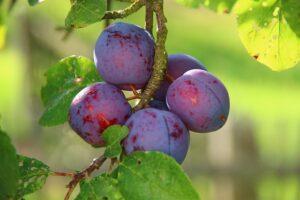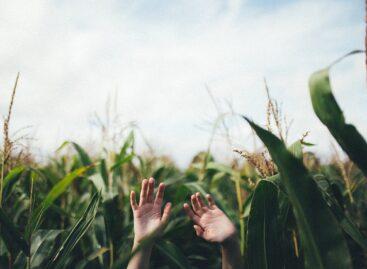The Nébih plum held a variety presentation at the Pölöskei Breed Experiment Station
At the end of August, the National Food Chain Safety Office (Nébih) organized a plum variety show at the authority’s Pölöske Variety Experiment Station. The participants who came to the presentation were able to get to know the varieties that have received state recognition in recent years, as well as the ability to grow Japanese plums and the pests of plum varieties. Finally, at the end of the program, the judges evaluated a total of 35 different plums, including European and Japanese plums.

(Photo: Pixabay)
The new, state-recognized plum varieties (for example, Haganta, Hanita, Jojo, Nábrád, Tegera, Tiszai zamatos) are the results of Hungarian and German breeding. It is important to know about Japanese plums that they are extremely diverse, typical fruits of the areas further south of us (Mediterranean). In Hungary, the plantations planted in previous years did not really live up to the expectations attached to them, however, the changing climate would make it possible to grow these varieties as well. Very valuable fruit, good taste, juicy, with special aromas and an excellent fruit seed/meat ratio.
Plums typically have a small or very small fruit size: they range between 16-18 grams
Their role in health preservation can be outstanding. Their content values are similar to that of sardine, but their size is significantly larger and their cultivability is much better. The fruit of the plum is collected in the wild, which results in uncertain quality, whereas the cultivation of plums in plantations puts the high-quality raw material, which can also be used for medicinal purposes, on a solid foundation.
The most important insect pests of plums are:
- Yellow plum aphid (Brachycaudus helichrysi) and ash aphid (Hyalopterus pruni): These insects feed on the sap of plum trees, usually on fresh shoots and leaves, which weakens the plant and promotes the spread of viral infections.
- Plum moth (Coccyx funebrana): The caterpillars bore into the fruit near the stem, which destroys the crop. It can have 2-3 generations in 1 year.
- Fruit wasps, bug-smelling plum wasp (Hoplocampa flava/H. minuta): The larvae bite into the beginning of the fruit, destroying it. An adult lays 20-30 eggs, and a larva damages 4-5 fruits.
- Spotted-winged fly (Drosophila suzuki): It not only attacks damaged fruit, but thanks to its serrated egg tube it can also infect fruit with intact skin tissue.
Nébih’s specialists presented 35 varieties of plums at the event
The special feature of this year was that the months of July and August were characterized by very little precipitation and extremely high temperatures. Accordingly, the ripening time of the plum varieties has also shifted earlier. The participants of the event could see, taste and judge the displayed plum samples. At the judging, the judges evaluated the varieties according to the size, size, color, flesh content, smell, taste and overall effect of the fruit. The presentation event is VP1-1.2.1–23. It was implemented in the framework of the “Support for Demonstration Plants” tender.
Nébih
Related news
The Ministry of Agriculture is helping dairy farmers with a new tender
🎧 Hallgasd a cikket: Lejátszás Szünet Folytatás Leállítás Nyelv: Auto…
Read more >AM: Tax and administrative burdens for farmers to be reduced from January 1
🎧 Hallgasd a cikket: Lejátszás Szünet Folytatás Leállítás Nyelv: Auto…
Read more >The Ministry of Agriculture supports farmers’ awareness with as many tools as possible in 2026
🎧 Hallgasd a cikket: Lejátszás Szünet Folytatás Leállítás Nyelv: Auto…
Read more >Related news
Fidelity Kitekintés 2026: Ne becsüljük alá az inflációt!
🎧 Hallgasd a cikket: Lejátszás Szünet Folytatás Leállítás Nyelv: Auto…
Read more >Company Trend 2025 – domestic businesses under strong pressure, in a negative trend
🎧 Hallgasd a cikket: Lejátszás Szünet Folytatás Leállítás Nyelv: Auto…
Read more >Surprising ordering statistics: foodora sampled the ordering habits of Hungarians in 2025
🎧 Hallgasd a cikket: Lejátszás Szünet Folytatás Leállítás Nyelv: Auto…
Read more >







